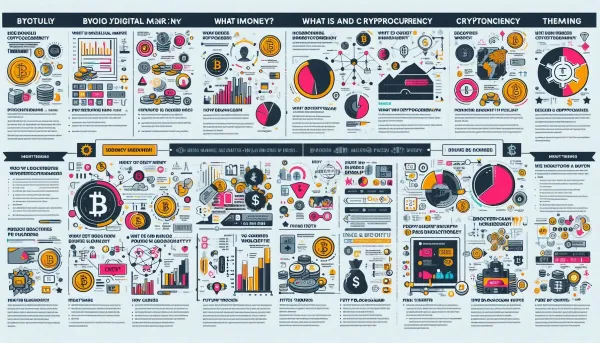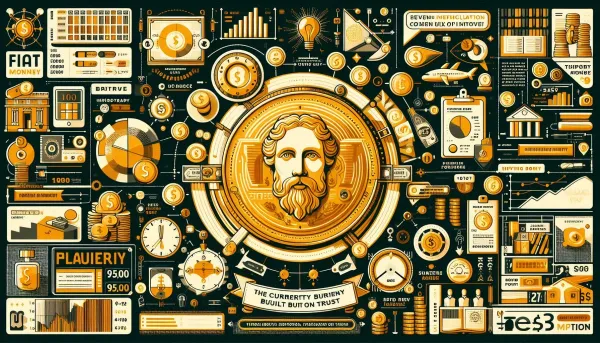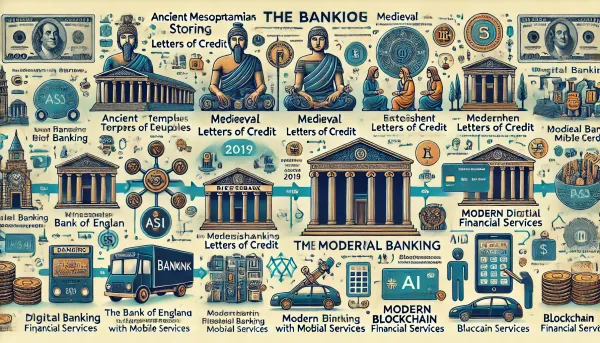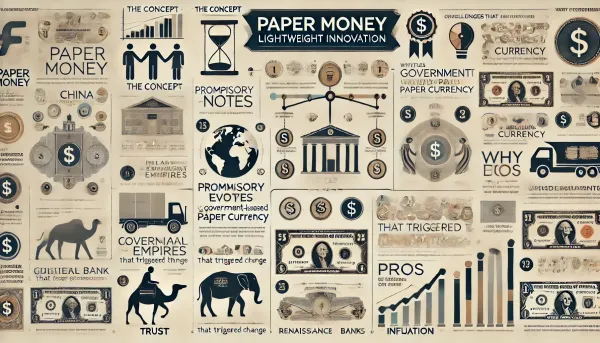Commodity Money: Assigning Value to Objects
Discover the fascinating journey of money, from ancient commodity forms like salt and gold to modern digital currencies. This infographic highlights the evolution of trade and trust, showcasing how objects became valuable through collective belief. Perfect for history and economics enthusiasts!
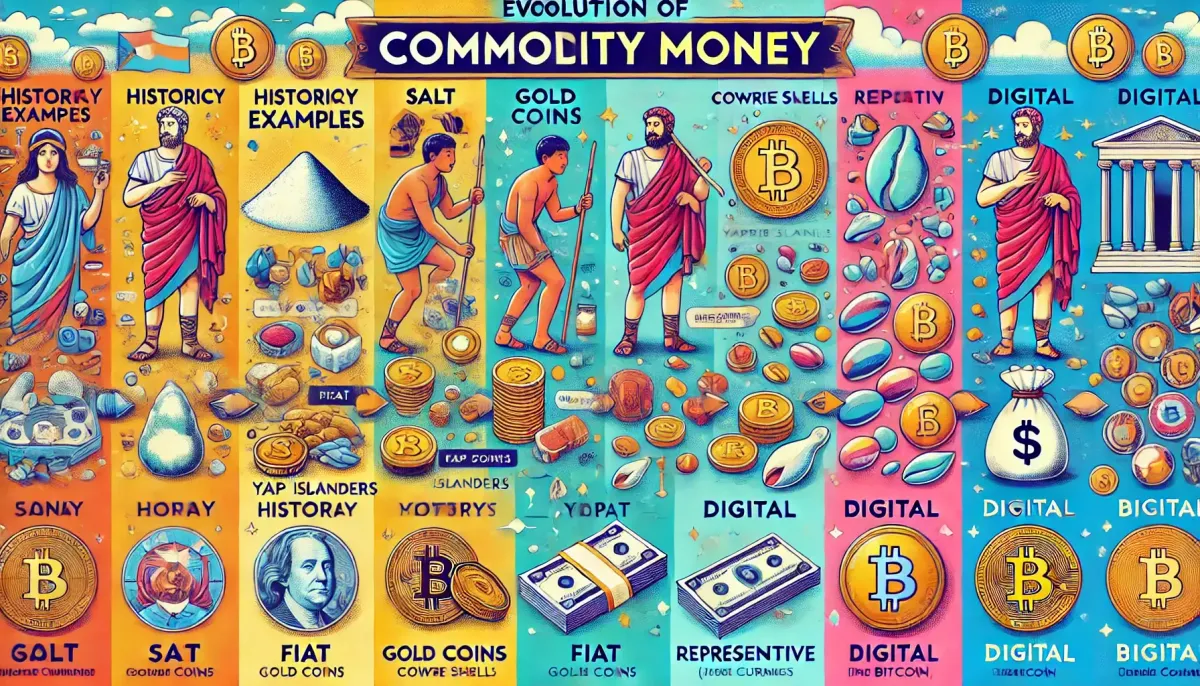
In a world before digital wallets and centralized banks, the idea of money was refreshingly tangible. Picture yourself in a bustling ancient marketplace—a cacophony of voices bartering, the rich aroma of spices wafting through the air, and the sun glinting off shimmering seashells, precious metals, and sacks of grain. Each object carried its own story, its own weight—both literally and figuratively. This was the era of commodity money, where the value of money was intrinsic, rooted in the object itself. But how did society come to agree on what had value? And what does commodity money teach us about the nature of modern currencies?
The Roots of Commodity Money
Commodity money is perhaps humanity’s earliest attempt to streamline trade. In prehistoric societies, bartering was the norm. One farmer might exchange a bushel of wheat for a fisherman’s catch. But what happened when the fisherman didn’t need wheat? Enter commodity money—a universally accepted medium that simplified transactions. Gold, silver, cowrie shells, salt, and even tobacco became staples of ancient economies. These objects weren’t arbitrary choices; they were valued for their rarity, durability, divisibility, and utility.
Imagine a Roman soldier in full armor, marching back to his camp with a pouch of salt—his hard-earned salary. Or picture an African trader marveling at the intricate patterns of cowrie shells, symbols of wealth and prosperity. These objects were more than just money; they were cultural treasures.
For example, salt—often called “white gold”—was so vital to ancient civilizations that Roman soldiers were sometimes paid in it, giving rise to the word "salary." Similarly, gold’s rarity and malleability made it a favorite for crafting coins and ornaments.
The Intrigue of Universality
One fascinating story comes from the Yap Islands in the Pacific Ocean. The islanders used massive limestone disks called Rai stones as money. These stones, some as large as a car, were so heavy they were rarely moved. Ownership was transferred through oral agreements, and everyone in the community knew who owned which stone. Despite their impractical size, these stones represented wealth and trust within the community.
Picture a village elder recounting the history of a particularly famous Rai stone, its value growing with each tale. The lesson? Value isn’t always about convenience; it’s about collective agreement. If everyone believes something has value, it does—whether it’s a Rai stone or a Bitcoin.
Commodity Money vs. Other Forms of Money
To appreciate commodity money, it’s essential to compare it with other types of money:
- Fiat Money: Unlike commodity money, fiat currency has no intrinsic value. A $20 bill is worth $20 because the government says so and because society agrees to use it. This reliance on trust makes fiat money more flexible but also more vulnerable to inflation and manipulation.
- Representative Money: This type bridges commodity and fiat money. Think of gold-backed dollars, where paper notes represented actual reserves of precious metals. While more secure than pure fiat money, representative systems often faced logistical challenges.
- Digital and Cryptocurrencies: Today’s currencies, like Bitcoin and Ethereum, draw parallels with commodity money in their scarcity and decentralized nature. However, their value is entirely digital, challenging traditional notions of tangibility.
The Psychology of Value
Why did ancient societies value cowrie shells or tobacco? Beyond practicality, commodity money tapped into the psychology of value. Humans have an innate tendency to attribute worth to objects based on scarcity, utility, and symbolism. Gold’s enduring allure, for instance, lies not just in its scarcity but also in its beauty and resistance to corrosion—qualities that make it feel timeless.
Imagine holding a gleaming gold coin in your hand, its weight a reminder of centuries of human history and aspiration. Or envision the thrill of receiving a perfectly preserved tobacco leaf, knowing it could be exchanged for a day’s worth of labor.
Lessons for Modern Economies
Commodity money’s rise and eventual decline reveal critical lessons:
- Intrinsic Value Matters: While fiat money dominates today, economic crises often drive people back to commodities like gold and silver. The “safe haven” appeal of these assets shows that intrinsic value still holds sway in uncertain times.
- Trust is the Bedrock: Whether it’s Rai stones or Bitcoin, any currency’s worth hinges on collective trust. Eroding this trust—through hyperinflation, corruption, or mismanagement—can lead to a currency’s collapse.
- Innovation Drives Currency Evolution: From barter to cryptocurrency, human ingenuity continues to redefine what constitutes money. Commodity money, with its tangible roots, reminds us that every financial system builds on its predecessor.
A Modern Twist: Commodity Money in the Digital Age
While traditional commodity money is largely a relic, its principles endure. Consider tokenized assets on blockchain platforms. These digital representations of real-world commodities, like gold or real estate, combine the best of both worlds: the intrinsic value of commodities with the convenience of digital transactions.
In another twist, gaming economies often mimic commodity money. Virtual items like rare skins or weapons in games like Fortnite or World of Warcraft hold real-world value, echoing the days when physical objects served as currency.
Conclusion: The Enduring Legacy of Commodity Money
Commodity money might belong to the past, but its lessons are eternal. It reminds us that money, at its core, is a social contract—a shared belief in value. From Rai stones to cryptocurrency, every evolution of money reflects humanity’s ingenuity and adaptability.
Next time you glance at a coin, a bill, or a digital wallet, take a moment to appreciate the journey. Behind every currency lies a story, a culture, and an agreement—a testament to our collective ability to assign value to objects and make them indispensable to our lives. It’s a reminder that even the smallest token—be it a coin, a shell, or a digital asset—can carry the weight of history and humanity’s unyielding creativity.
FAQ: Understanding Commodity Money
1. What is commodity money? Commodity money is a type of currency where the money's value is derived from the material it is made of, such as gold, silver, or salt. Unlike fiat money, it has intrinsic value and can be used beyond just being a medium of exchange.
2. Why were items like salt and cowrie shells used as money? Items like salt and cowrie shells were used as money because they were durable, scarce, and widely valued in their respective cultures. Their utility and symbolism made them practical and acceptable mediums of exchange.
3. How does commodity money differ from fiat money? Commodity money has intrinsic value, meaning the material itself is valuable (e.g., gold coins). Fiat money, on the other hand, has no intrinsic value and derives its worth from government backing and societal trust.
4. Is commodity money still used today? While traditional commodity money is no longer widely used, its principles are seen in modern assets like gold and tokenized digital commodities on blockchain platforms.
5. What are some examples of commodity money in history? Historical examples include gold and silver coins, salt in ancient Rome, cowrie shells in Africa and Asia, and tobacco in colonial America.
6. How does trust play a role in the value of money? Trust is essential for any currency. For commodity money, trust lies in the material's value. For fiat and digital currencies, it depends on societal belief in their stability and acceptance.
7. What can we learn from the evolution of commodity money? The evolution of commodity money teaches us about the importance of intrinsic value, trust, and innovation in developing financial systems. It also highlights how currencies adapt to meet the needs of changing societies.


